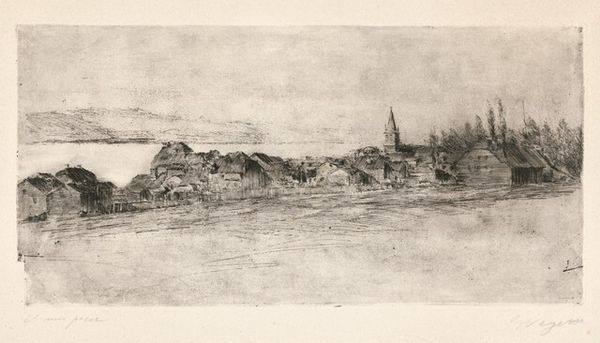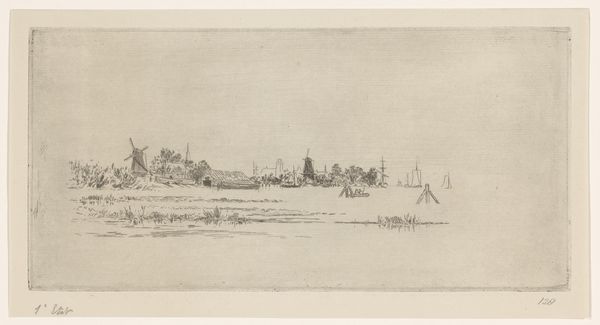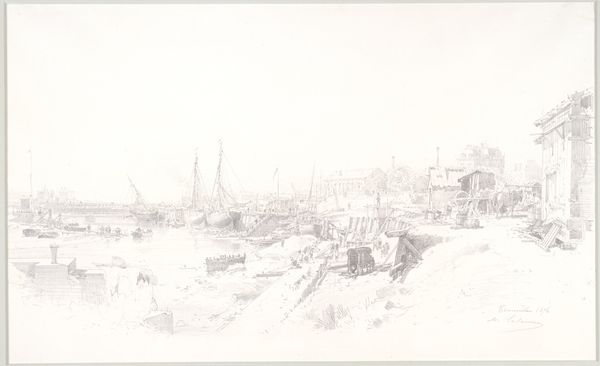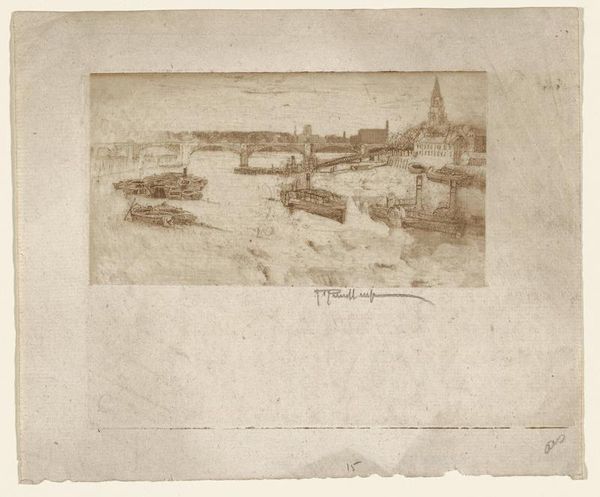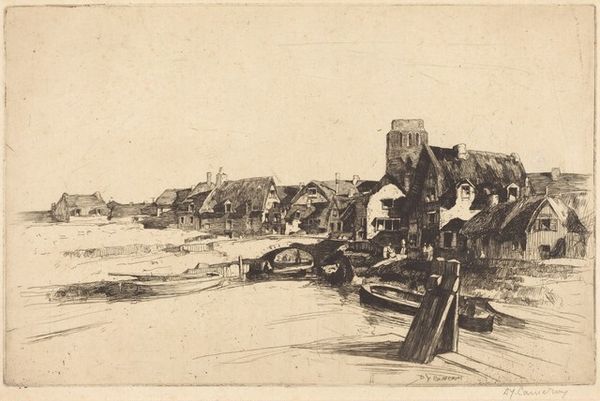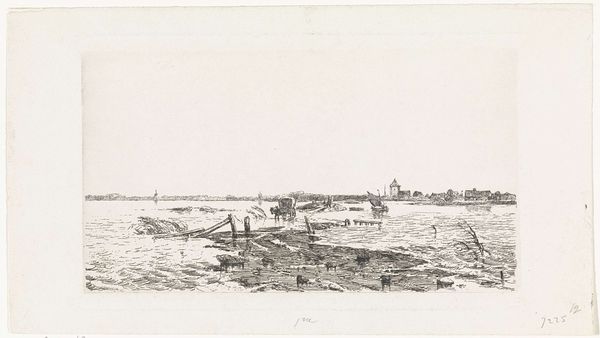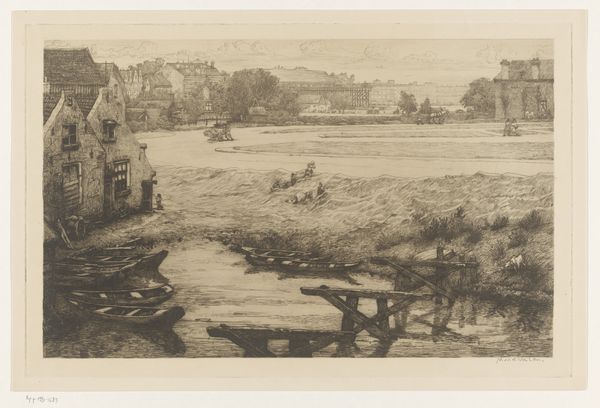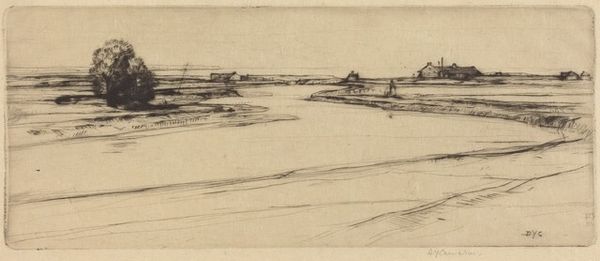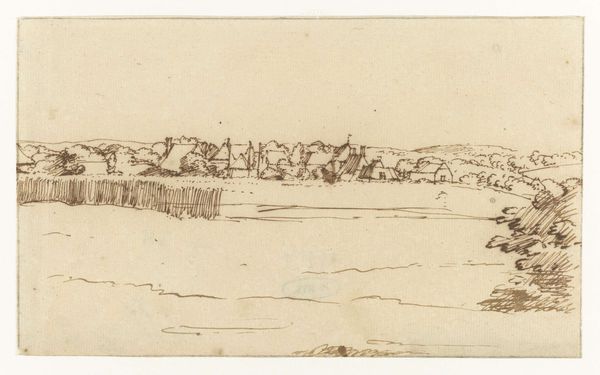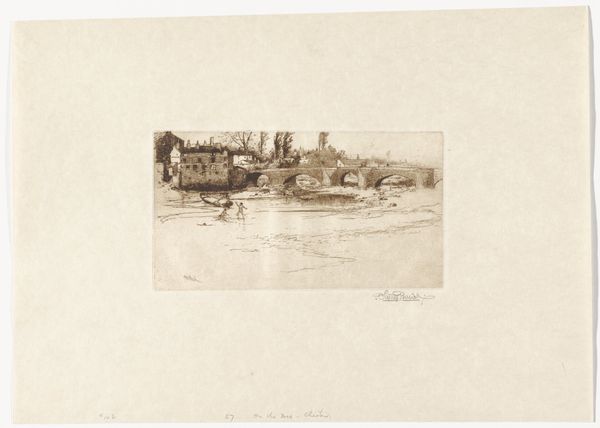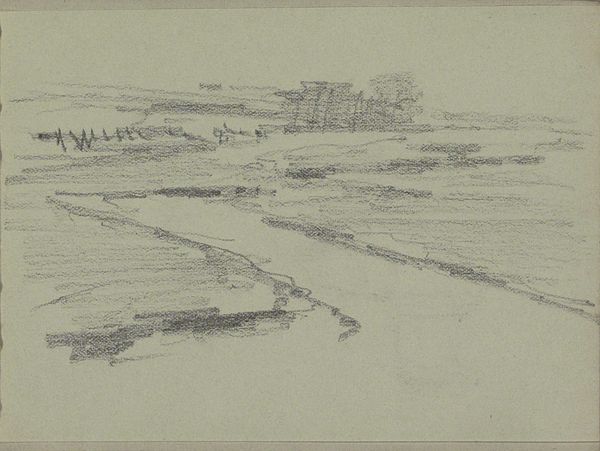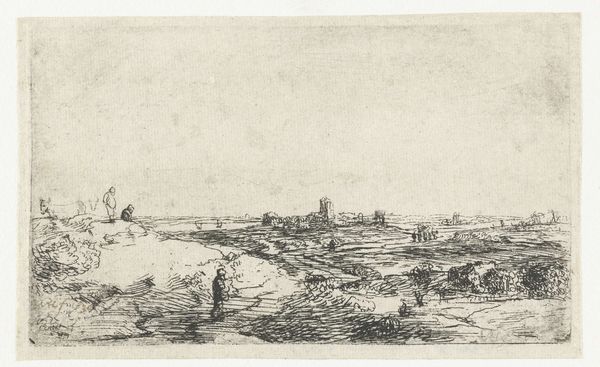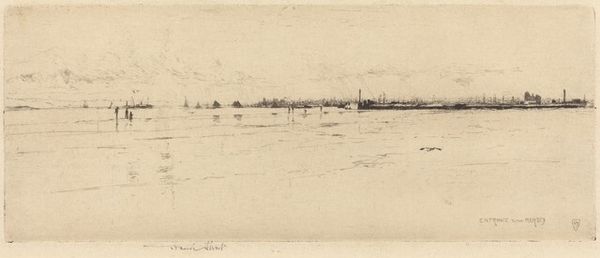
print, etching
# print
#
etching
#
landscape
#
cityscape
Dimensions: plate: 7.3 × 16.83 cm (2 7/8 × 6 5/8 in.)
Copyright: National Gallery of Art: CC0 1.0
Curator: Clifford Addams’ “The Thames,” an etching dating to around 1926, captures a cityscape along the river. What strikes you first about it? Editor: The Thames definitely feels… spectral. There's an ethereal, almost ghostly quality to the ships and buildings along the skyline. They emerge faintly from this seemingly vast, rippling water, rendered in delicate, scratchy lines. I get a strong sense of a fading memory, or a vision half-seen. Curator: Addams was deeply influenced by the social realism and modernist currents of his time. How do you think that might play into this depiction of the Thames? Considering also that his artistic career spanned both sides of the Atlantic. Editor: Absolutely, knowing the historical context is key. Rivers like the Thames were essential arteries of trade and empire. Addams may be using the soft, faded rendering not simply as a stylistic choice, but to evoke that sense of the past glory but in its fading influence, creating a meditation on cultural legacy through symbolic waterways and how urban life reshapes across multiple identities within those urban zones. It invites considering the narratives behind the buildings represented. Curator: I appreciate the consideration of layered history through place, but what stands out to me about it is this interesting visual motif across artistic mediums of urban harbor life after the end of World War I. It does point to how symbolic rivers are to nationhood itself and its connection to industrialism. It's a delicate portrayal, but within those faint, scratchy lines is also a commentary on labor. Editor: And what could be interpreted in that river! The flowing of the river itself almost evokes a certain continuous state of identity within city life itself; one that cannot be placed nor categorized, or it does capture something that has come and gone, which means what’s at stake could mean almost everything at once, considering industrial eras in mind, as we mentioned. The composition becomes so incredibly revealing, especially its delicate quality. The water feels alive. Curator: Considering how symbols reflect evolving urban identities offers rich perspective. The piece serves not just as a static depiction but as a catalyst to understand how a major capital like London processes and negotiates social landscapes around global transitions. Editor: It leaves us contemplating the symbolic weight we attach to such cultural rivers—what they say about us now.
Comments
No comments
Be the first to comment and join the conversation on the ultimate creative platform.
